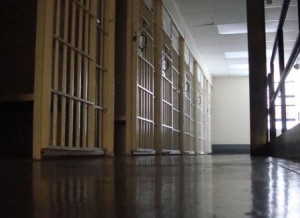 Given the high rate of torment suffered by LGBT youth in custody, activists applauded last week’s finalizing of a landmark law that took nine years to get from adoption to implementation.
Given the high rate of torment suffered by LGBT youth in custody, activists applauded last week’s finalizing of a landmark law that took nine years to get from adoption to implementation.
Last Monday, the federal Department of Justice finalized a set of guidelines under the Prison Rape Elimination Act that could help stem the risks of the already at-risk LGBT population that is incarcerated, including minors.
“We were already working on this issue while PREA was being passed, but this raises awareness,” said Sarah Schriber, senior policy analyst with the Chicago-based Health and Medicine Policy Research group and community convener for the Illinois Court Involved LGBTQ Youth Task Force.
According to Schriber, few juvenile detention center personnel even knew what the existing anti-harassment rules were. “A much harder part is making those policies meaningful on the ground,” she said. “We’re really lagging in education.”
Along with anti-harassment policy, the new regulations create federal requirements for employee training and place limits on cross-gender searches and screenings, ensuring they only happen behind closed doors with a licensed medical practitioner.
Much of this work was already underway in Illinois, due in part to a coalition of researchers, lawyers and justice department personnel. In 2010, the Illinois Court Involved LGBTQ Youth Task Force was established to draft better policy for the Illinois juvenile justice system and lead employee trainings.
Two years later, the task force has led trainings for nearly every Cook County Juvenile Temporary Detention Center employee who works directly with youth, educating personnel on policy and broader issues and on definitions related to sexual orientation and gender identity.
Similar workshops are being held for juvenile prisons, run by the State of Illinois Department of Juvenile Justice, as well as Cook County juvenile probation employees.
The issues facing LGBTQ youth in custody are often invisible to juvenile justice personnel and policy makers, because many young people choose not to self-identify, said Mykel Selph, director of the Office of Girls and Gender at Cook County Juvenile Temporary Detention Center.
But a 2010 study by Angela Irvine, director of research at the Oakland-based National Council on Crime and Delinquency, found 13 percent to 15 percent of youth in the juvenile justice system consider themselves gay or gender non-conforming. In the overall population, 5 percent to 7 percent of youth identify this way.
According to a recent report by the Center for American Progress, LGBTQ youth are more likely to end up in the juvenile justice system, likely due to higher rates of bullying and harassment and lower social support at home.
Once in custody, research suggests gay and transgender youth may be more likely to experience sexual assault and harassment.
Research from 2007 by the California Department of Corrections and Rehabilitation found 67 percent of gay or gender non-conforming men reported sexual assault by other inmates, a rate 15 times higher than among heterosexual, non-transgender male inmates.
Some sexual abuse and harassment stems from housing gender non-conforming youth with members of their biological sex. In the nation’s juvenile justice centers, a young transgender woman must still live among young men.
“People assume if you put a transgender female in a female unit, that person will assault others,” Schriber said. “Often it is the other way around.”
In Chicago, Cook County Jail has begun housing transgender women with other women, but Schriber said the policy is harder to change for youth facilities.
“People don’t understand that gender identity is pretty well established early on,” she said. “They think it’s a phase.”
The PREA guidelines mandate that “in deciding whether to assign a transgender or intersex resident to a facility for male or female residents, the agency shall consider on a case-by-case basis whether a placement would ensure the resident’s health and safety.”
But there are smaller changes detention centers can make to create a safer environment, Selph said.
Allowing transgender boys to wear boxers or having every youth in custody wear the same clothing, instead of blue and pink t-shirts, can go a long way in helping a transgender youth’s mental wellbeing, Selph said.
“Homophobia can happen in a very subtle, unintentional way,” Selph said, during a recent gathering of experts and practitioners hosted by the federal Office of Juvenile Justice and Delinquency Prevention. “When we talk about safety, emotional safety is implied but not focused on in a deliberate [way.] It is emotional safety that is of the utmost importance.”
Christie Thompson is a reporter with the Chicago Bureau
Photo by Advancing Transgender Equality
